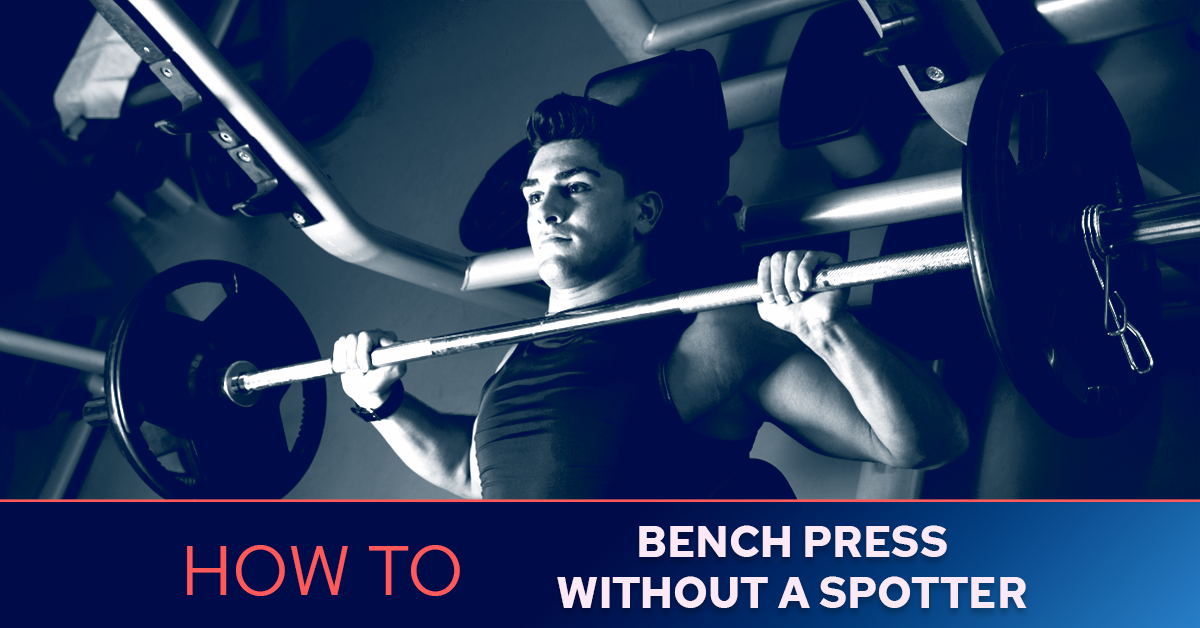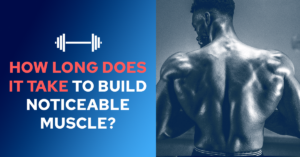How to Bench Press Without a Spotter

Many people want to improve their chest strength by bench pressing but don’t always have someone around to spot them. Bench pressing without a spotter can be risky, especially with heavy weights.
Our blog shares safe methods and alternatives for those solo workout sessions. Get ready for some great tips!
Key Takeaways
- Safety first: Don’t use collars on your barbell, grip the bar with thumbs around it, and set up safety arms or pins before you begin. These steps protect you if a lift fails.
- Avoid Smith machines for bench pressing alone because they limit movement and muscle engagement. Try band-resisted pushups as an effective alternative to build strength safely.
- Improve your solo bench press by choosing weights that allow good form, gradually building strength with targeted exercises, perfecting your technique, and resting between sets.
The Risks of Bench Pressing Without a Spotter
Bench pressing without a spotter holds serious dangers. If the bar slips, you could get trapped or seriously injured. This risk becomes fatal in moments of muscle failure when you can’t push the bar back up.
The Smith machine has caused deaths and should be avoided for bench pressing alone. It’s safer to use equipment designed for solo lifting.
Having safety measures is vital while benching alone. Next, we’ll explore essential safety tips for solo bench press workouts to keep you safe and confident in your fitness journey.
Essential Safety Measures for Bench Pressing Alone
Ensure the barbell does not have collars. Grip the barbell with your thumbs around it. Use safety arms or pins for added protection.
Not Using Collars on Your Barbell
Not using collars on your barbell can be a smart move if you bench press without a spotter. This technique allows weights to slide off the barbell easily if you fail a lift. It acts as a backup plan, helping to prevent the loaded barbell from pinning you down.
You simply tilt the barbell to one side and let the weights fall off safely onto the floor.
This method requires practice and caution. Start with lighter weights to get used to balancing and tilting the barbell correctly. Always perform this in a safe space where dropping weights won’t cause damage or injure someone else.
By allowing for an emergency exit strategy during solo bench press sessions, not using collars ensures you can push yourself while maintaining safety.
Taking a Thumbs-Around Grip on the Barbell
Grab the barbell with a thumbs-around grip to keep it secure in your hands. This way, you lower the chance of the bar slipping and causing an accident. Holding the bar this way is crucial for safety while bench pressing alone.
It gives you more control and stability during each lift.
Make sure to always use this grip technique, especially if you’re lifting without a spotter around. By doing so, you boost your confidence knowing that you have a firm handle on the weight.
This method not only keeps you safe but also enhances your ability to perform better during workouts.
Using Safety Arms or Pins
Set up safety arms or pins in your power rack before you start bench pressing. This setup acts as a catch if you can’t lift the barbell back up. Make sure they’re at the right height to catch the bar but still let you bring it down to your chest.
Always adjust these safety tools for every workout. They are key for lifting safely when you don’t have a spotter. Using them means you can push yourself without fear of getting stuck under the weight.
Why You Should Avoid Smith Machine for Bench Pressing Alone

Using a Smith machine limits your range of motion, resulting in less upper-body muscle activation compared to using a barbell. The Smith machine only focuses on chest muscles, while the barbell engages both chest and shoulder muscles, providing better control and building more overall upper-body strength.
Moreover, the band-resisted pushup is suggested as an effective alternative to the Smith machine for building chest and arm strength with equal muscle activation as the bench press.
Tips for Improving Your Bench Press Without a Spotter
- Use a weight that allows you to maintain proper form and control throughout each repetition.
- Build up your strength gradually by incorporating exercises that target the muscles involved in the bench press, such as chest presses, push-ups, and tricep dips.
- Focus on perfecting your technique, ensuring that your grip, elbow position, and body alignment are optimized for maximum efficiency and safety.
- Incorporate regular rest periods between sets to allow for adequate recovery and prevent muscle fatigue or failure.
- Consider seeking guidance from a qualified fitness professional to receive personalized tips and feedback on your bench press technique.
SELF-DEVELOPMENT Pro Tip:
When I don’t have a spotter in the gym, a personal preference of mine is to bench press with a dumbbell in each hand to engage stabilizer muscles and activate both left and right chest muscles more equally. It’s a great method to target the chest muscles while lifting safely when solo as you can lower the weights slowly to the side if you’re close to muscle failure.
This is a great alternative to using a barbell for bench pressing when you don’t have a spotter. Using dumbbells also allows for a greater range of motion and can help prevent muscle imbalances. Just make sure to start with a weight that you can safely handle on your own and always use proper form to prevent injury.
Now onto “6. Alternatives to Bench Pressing Without a Spotter”…
Alternatives to Bench Pressing Without a Spotter
– Consider using different cable machine attachments.
– Explore alternative exercises for chest and triceps.
Using Different Cable Machine Attachments
Incorporating different cable machine attachments into your workout routine can enhance strength and stability. Opt for handles that challenge various grip positions, such as straight bars or rope attachments.
This allows for a more comprehensive engagement of muscles during bench press exercises, promoting overall development and reducing the risk of plateauing in your progress.
Integrating cable machine attachments not only targets specific muscle groups but also promotes balanced muscle activation, essential for long-term gains and injury prevention. By utilizing different attachments, like single-hand grips or wide-grip bars, you can effectively diversify your training regimen while ensuring continual improvement.
Conclusion
In conclusion, bench pressing without a spotter can be risky but with the right safety measures and alternatives, it can be done safely. Using a barbell without collars and taking a thumbs-around grip are essential for safety.
Safety arms or pins on the rack provide added protection during solo bench pressing. Avoid using Smith machines for bench pressing alone as they lack necessary safety features. Lastly, consider using cable machine attachments or lighter weights as alternatives to traditional bench pressing without a spotter.
FAQs
1. What is the best way to bench press without a spotter?
The best way to bench press safely without a spotter is by using safety pins in your home gym setup. They catch the weight if you can’t lift it.
2. Can I still do heavy bench presses alone?
Yes, but always set up safety pins at the right height in your squat rack or power cage. This lets you try heavy lifts with less risk.
3. What should I never do when bench pressing alone?
Never use a “suicide grip,” where your thumbs don’t wrap around the barbell. It’s risky and can lead to dropping the weight on yourself.
4. How can I get out from under the bar if I’m stuck?
If you’re unable to lift the weight, roll it down towards your waist carefully—this move is known as the “roll of shame.” It’s better than getting hurt.
5. Is there any specific technique recommended by professionals for solo bench pressing?
Yes, Louie Simmons from Westside Barbell suggests strength training techniques that are safe and effective for solo lifters, like focusing on form and not overloading too quickly.
6. Why is privacy important when creating my own space for bench pressing at home?
Having a private space means you won’t feel rushed or embarrassed if you need a minute to find your strength or correct your form during movements.

















